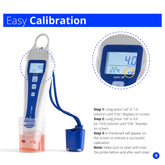The Complete Guide to Plant Growth and pH: Why pH Balance is Essential in Soil and Coco Coir
🌿 The Complete Guide to Plant Growth and pH: Why pH Balance is Essential in Soil and Coco Coir
When it comes to growing healthy, high-yield plants—whether cannabis, houseplants, vegetables, or herbs—pH balance is one of the most overlooked yet critical factors. From nutrient uptake to microbial health and water absorption, pH directly affects every stage of plant growth. Whether you're growing in traditional soil or hydroponic-friendly coco coir, keeping your pH levels in the optimal range is essential for preventing deficiencies and ensuring strong, vigorous development.
At Lakes Area Grow Co, we specialize in premium grow gear and education to help growers of all levels succeed. In this detailed guide, we’ll explore why pH matters in plant growth, how it affects your soil or coco medium, and how to monitor and adjust pH using trusted tools and products we carry.
🌱 What is pH and How Does it Impact Plant Growth?
pH (potential of Hydrogen) is a scale that measures the acidity or alkalinity of a solution, ranging from 0 (very acidic) to 14 (very alkaline), with 7 being neutral. In plant cultivation, pH determines the availability of essential nutrients in the root zone. Even if nutrients are present in your medium or nutrient solution, they may not be accessible to plants if the pH is off.
👉 Pro Tip: Most plants thrive in a slightly acidic environment, where nutrients are most bioavailable.
✅ Ideal pH Ranges for Different Growing Mediums
The right pH range depends on your growing medium:
-
Coco Coir: Ideal pH = 5.5 to 6.5
-
Soil: Ideal pH = 6.0 to 7.0
When pH drifts outside these ranges, plants suffer from nutrient lockout, leading to stunted growth and visible health problems. Monitoring and maintaining the proper pH is a simple but powerful way to keep your plants thriving.
🧪 Why pH Balance is Crucial: Nutrient Availability
The most important role of pH in plant growth is its influence on nutrient solubility. Here’s what happens when pH is imbalanced:
-
Low pH (too acidic):
-
Nutrients like phosphorus, calcium, magnesium, and potassium become less available.
-
Increased risk of aluminum or manganese toxicity in soil.
-
-
High pH (too alkaline):
-
Micronutrients such as iron, manganese, zinc, and copper become locked out.
-
Leads to chlorosis (yellowing between leaf veins) and other deficiencies.
-
Even if you’re feeding your plants correctly, an incorrect pH can prevent them from absorbing what they need.
🦠 Microbial Activity and pH: Supporting Your Soil Biology
Beneficial microbes—bacteria and fungi—play a key role in organic plant growth. These organisms help break down organic matter, release nutrients, and suppress harmful pathogens. However, these microbes have a preferred pH range, usually between 6.0 and 7.0 in soil.
An imbalanced pH can:
-
Reduce microbial populations
-
Disrupt nutrient cycling
-
Increase susceptibility to pests and diseases
Maintaining the correct pH fosters a balanced, living medium that naturally supports plant health.
💧 How pH Affects Water Uptake and Root Function
pH also influences the mobility of ions in the root zone, which directly impacts how water and nutrients are absorbed. Extreme pH conditions can:
-
Alter the osmotic balance
-
Reduce water uptake
-
Lead to wilting and dehydration, even in moist soil
In essence, if the pH is wrong, your plants can't "drink" properly, even with adequate watering and feeding.
🚨 Signs of pH Imbalance in Plants
Don’t let pH problems sneak up on you. Look for these common warning signs:
-
Yellowing leaves or interveinal chlorosis
-
Burned or brown leaf tips
-
Weak stems and poor root development
-
Slow growth or poor bud/flower formation
-
Plants appearing over- or under-watered despite proper care
If you spot these symptoms, test your pH immediately—especially if you're feeding regularly and still seeing issues.
🧰 Monitoring and Adjusting pH: Tools & Products That Work
The easiest and most accurate way to monitor pH is with a digital pH meter or pen. At Lakes Area Grow Co, we use and recommend the Bluelab pH Pen—a reliable, industry-leading tool for testing feed water, runoff, or slurry samples.
How to Test:
-
Nutrient Solution: Test before feeding your plants.
-
Runoff Water: Helps determine what's happening at the root zone.
-
Soil Slurry Test: Mix soil with distilled water for a direct medium reading.
How to Adjust:
-
To Raise pH: Use General Hydroponics pH Up (potassium hydroxide).
-
To Lower pH: Use General Hydroponics pH Down (phosphoric acid).
-
For long-term soil pH adjustment:
-
Add lime (raises pH)
-
Add elemental sulfur (lowers pH)
-
Products Available at LakesAreaGrowCo.com:
-
✅ Bluelab pH Pens
-
✅ General Hydroponics pH Up & Down
-
✅ Bluelab pH Pen Care Kits
-
✅ Premium coco coir and soil mixes
-
✅ Custom Grower pH & EC testing bundles
We also provide hands-on support and education through consultations—because every grower deserves the right tools and the knowledge to use them.
💡 Final Thoughts: Master Your pH, Master Your Grow
Balancing the pH of your grow medium is not just a detail—it’s a cornerstone of successful gardening. Whether you grow in coco coir or soil, consistently monitoring and correcting pH will lead to:
-
Healthier plants
-
Bigger yields
-
Fewer nutrient problems
-
More consistent results
At Lakes Area Grow Co, we make it easy for you to take control of your garden’s success. From trusted pH tools and adjustment solutions to personalized grow consultations, we’ve got everything you need to grow smarter, not harder.
📦 Shop the Best pH Tools for Plant Growth
➡️ Visit LakesAreaGrowCo.com to browse our full selection of:
-
Bluelab pH pens and accessories
-
Soil and coco-specific products
-
Complete plant care and grow kits
Your grow deserves precision—don’t guess your pH. Test it, fix it, and flourish.







Leave a comment
Please note, comments need to be approved before they are published.